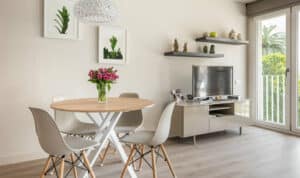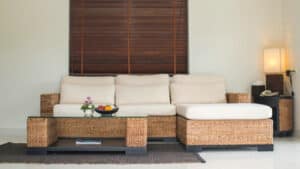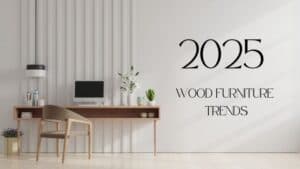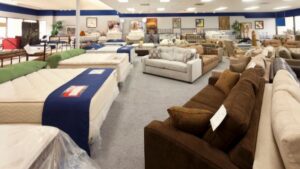When you’re furnishing your living space, you might come across two similar terms: couch and sofa. While they may seem interchangeable, there are subtle differences to consider. In this article, we will delve into the characteristics and nuances of these two staple pieces of furniture.

Historical Background
You might wonder how we ended up with two different terms for the same piece of furniture. Here’s a brief history lesson on the origins of the words “sofa” and “couch.” The roots of these two words can be traced back to the Arabic and Old French languages.
The term sofa comes from the Arabic word “suffah,” meaning a raised platform covered with cushions and blankets. The concept was introduced to the French in the 17th century and subsequently brought to England, where it was adapted into the term “sofa.” As writings by Jane Austen and Thomas Hardy started featuring sofas, the word gained widespread popularity.
On the other hand, the word couch has its origins in the Old French language, coming from the word coucher, meaning “to lie down.” The term “couch” became more common in everyday English, and over time, it started to be used interchangeably worlds with the term “sofa.”
Industry Terminology and Usage
As you dive deeper into the industry term, you’ll notice that sofa is a term that is often used in interior design. Couch is considered to be a more casual term.
Merriam-Webster defines a “sofa” as a “long, upholstered seat usually with arms and a back” while a “couch” is “an article of furniture for sitting or reclining.” The nuance lies in the design and formality of each furniture piece.
As a consumer, you might find that retailers tend to prefer the term “sofa” over “couch.” This could be due to the fact that sofas are generally perceived as more formal and sophisticated, adding a polished touch to your living spaces. However, both terms can still be found in various settings.
Here’s a brief comparison of the two terms:
- Sofa:
- Preferred by industry professionals and designers
- Slightly more formal origin
- Commonly used in retail settings
- Couch:
- Considered more casual
- Less commonly used by industry experts and designers
- Still found in various settings, like casual furniture stores
Differences in Construction Details Between Couch and Sofa
Structure and Form
When comparing a couch and a sofa, it’s important to consider their structural differences. Couches tend to have a more casual and versatile design, often with softer lines and sometimes lacking arms. They’re perfect for lounging, napping, or binge-watching your favorite shows.
In contrast, sofas usually have more structured, upholstered arms and backs, giving them an appearance that is more formal than a couch, making them ideal for conversations and adult time in spaces like living rooms and sitting areas.
Material and Upholstery
In fact, in the choice of material and upholstery, there are no big differences between sofas and sofas.
Here’s a quick comparison of the typical characteristics of couch and sofa materials:
| Material | Couch | Sofa |
| Leather | Casual, versatile design | Higher-end options, more formal structure |
| Fabric | Wide variety of patterns and colors | Can be more structured and formal |
| Velvet | Soft, inviting appearance | Plush, luxurious, and sophisticated |
When choosing between a couch and a sofa, think about your lifestyle and design preferences. A fabric or leather couch may be more suitable for a casual, family-friendly space, while a velvet sofa creates an air of elegance in a formal setting. Whatever your choice, remember to consider the construction details to ensure you’re selecting the right piece of furniture for your home.
Types of Couches and Sofas
When it comes to choosing the perfect seating for your home, you’ll come across various types of couches and sofas. Let’s explore some popular and stylish options to help you make an informed decision.
Settee: A settee is a small, elegant sofa that typically seats two people. Known for its exposed wooden frame and straight, upholstered back, a settee offers a space-saving option for your living room or bedroom, while still providing a touch of elegance.

Divan: Unlike other types of couches and sofas, a divan doesn’t have a backrest or arms. It’s more of a bed-like piece of furniture, usually adorned with cushions for added comfort. A divan works well as a versatile seating option in a guest room or open living space.

Loveseat: As its name implies, a loveseat is designed to seat two people comfortably. Similar to a small sofa, it can have various styles like contemporary or traditional. A loveseat is a great addition for smaller spaces where a full-sized sofa may not fit, or as a complementary piece to a larger sofa for extra seating.
Sectional: A sectional sofa is a versatile and popular choice for spacious rooms. It’s made up of multiple modular pieces that can be arranged to suit the needs of your space. Sectionals come in a variety of shapes like L-shaped or U-shaped, offering plenty of seating for your family or guests.

Pull-out Sofa: A pull-out sofa, also known as a sleeper sofa, offers a dual-purpose solution for seating and sleeping. It’s designed with a hidden mattress that can be pulled out to provide a comfortable sleeping surface for guests. This is an excellent choice for small apartments or homes without a dedicated guest room.

How to Choose the Right Piece
When selecting the perfect piece of furniture for your living space, there are several factors to consider. In this section, we’ll discuss how to choose the right piece based on the room type and your specific size and design needs.

Consider Room Type
First, think about the room where the piece is going to be placed. Each room in your home has different requirements and purposes. Here’s a quick guide to help you choose:
- Living Room: For a formal living room, opt for a more structured, elegant sofa to complement the room’s design.
- Family Room: A casual, comfortable couch is well-suited for a family room, where you can relax and spend quality time together.
- Den: Cozy up with a comfortable couch in your den, perfect for movie nights or reading a book.
- Basement: A plush couch with various seating options is ideal for a basement space, where you can entertain guests or lounge around.
- Office: A sleek, stylish sofa would be more suitable for an office space, where you want to maintain a professional atmosphere.
- Sitting Room: Sofas work great in sitting rooms, where the decor is often more elegant, and conversations are the main focus.
- Bedroom: A small couch or loveseat can be a lovely addition to a bedroom, offering a cozy spot to relax without taking up too much space.
- Playroom: A sturdy, easy-to-clean couch is perfect for a children’s playroom, as it provides a comfortable seating area for playtime and can withstand wear and tear.
Assessing Size and Design Needs
When considering the size and design details of your desired sofa or couch, think about the available space in your room and the overall aesthetic you’re aiming for. Measure your room and plan accordingly. Keep these factors in mind:
- Size: Sofas typically come in standard sizes like loveseats, standard, and sectional. Choose a size that fits the room without overwhelming the space or causing difficulties with traffic flow. Couches, being more casual, can come in various unique shapes and sizes that can be customized to your room.
- Style: Think about the overall style of your room and any existing furniture. Do you prefer modern, minimalist design, or something more traditional?
- Comfort: Consider how you plan to use the piece. Will it be mainly for seating during social gatherings or for lounging and relaxation? Make sure to choose between a sofa or couch based on your primary needs for comfort and style.
- Material: Lastly, consider the material of your desired piece. Leather, fabric, and microfiber are all common options. Choose a material that fits your lifestyle – for example, easy-to-clean microfiber would be well-suited for households with children or pets.
Quality and Durability
When choosing between a sofa and a couch, one important factor to consider is quality and durability. That being said, not all sofas and couches are created equal. It’s important to compare different brands and materials to find the perfect balance of quality, durability, and price. Here are some key factors to look for:
- Frame: A sturdy frame made from hardwood or metal is essential for long-lasting support.
- Upholstery: The fabric used should be durable and easy to clean, such as microfiber or leather.
- Cushions: High-density foam or down-filling provides a good level of comfort and support.
Frequently Asked Questions
What are the variations in comfort and usage?
When it comes to comfort and usage, sofas usually have more structured, upholstered arms and backs, making them suitable for more formal settings. Couches, on the other hand, are often more casual with softer lines and may lack arms, making them more versatile and more inviting for a nap or relaxation.
How do their sizes and shapes differ?
Couches tend to be smaller, with a more relaxed shape, often designed for lounging and casual use. Sofas are usually larger and have a more formal, structured design with arms and a back. This difference in size and shape makes sofas more suited to larger spaces and formal occasions, while couches can be more easily incorporated into a variety of room sizes and layouts.
What role does design play in their distinction?
Design plays a significant role in distinguishing between sofas and couches. Sofas often have a design-oriented feel and refined appearance. In contrast, couches typically feature a more casual and versatile design. This design distinction reflects the respective formal and casual settings in which they are typically found.
What factors affect the price of each?
The price of sofas and couches can vary based on several factors, including material, construction quality, size, and design. Typically, sofas are more expensive than couches due to their more formal appearance, larger size, and higher-quality materials. In contrast, couches generally offer a more affordable option for those seeking casual and comfortable seating. However, it is essential to consider the specific features and quality of each piece before making a purchase, as prices can vary significantly even within each category.






